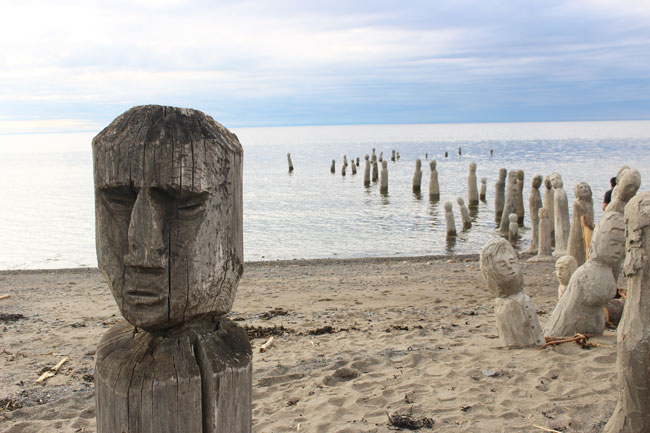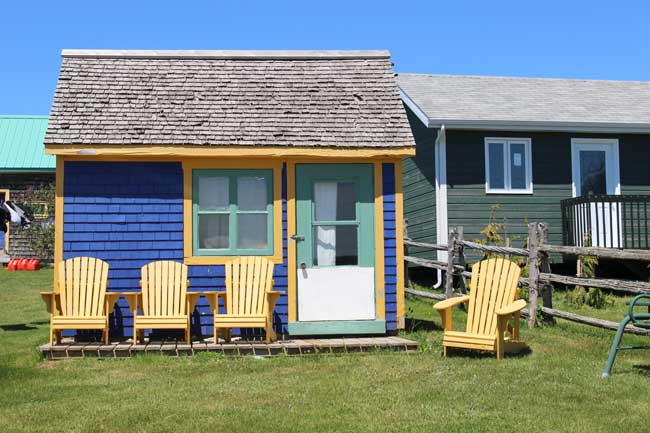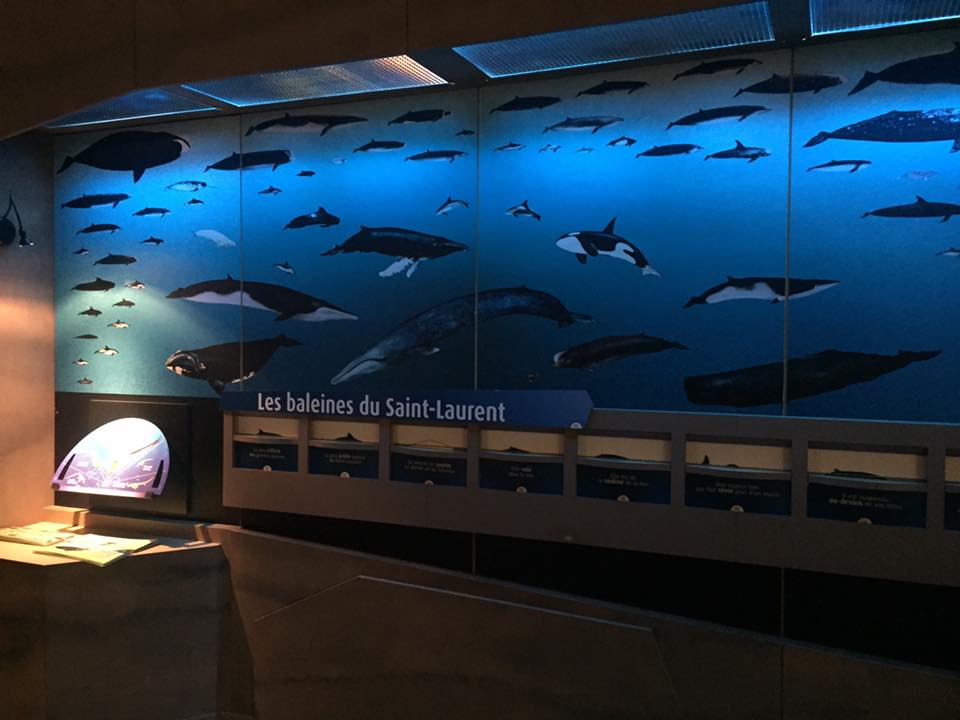

“Look ahead,” says Captain Julie. “We might be coming up on a small pod of belugas.”
Travel in Maritime Quebec
We’re in Quebec on a yellow zodiac, zooming across the St. Lawrence River in search of whales with Croisières AML. Captain Julie has taken us into the heart of the Saguenay-St Lawrence Marine Park, a protected region so rich with whales that marine researchers come here from around the world.
Sure enough, six beluga whales in the distance, their white backs reflecting in the Quebec sunshine as they surface.

Whale Watching in Quebec
Quebec may be known for its rich culture, unique history and excellent food, but it’s also one of the best places in North America for whale watching. Thirteen species of whales, including blue, fin and humpbacks, can be found in the Estuary and Gulf of St. Lawrence.
The mighty St. Lawrence, one of the world’s longest rivers, bisects southeastern Quebec. Maritime Quebec has more than 3000 km of coastline, 40 lighthouses, 10 national parks and dozens of small towns and cities. Life is centered on the river, with ferries playing an important role in transportation.
Though the whales have drawn me to this region of Quebec, our travels here have been just as pleasant. After flying into tiny Mont-Joli Airport, my friends and I began our road trip in Maritime Quebec with a 140 km-drive to Rivière-du-Loup.

Like all good road trips, this one included pit stops. Our first one was at Centre d’art, Auberge & Restaurant Marcel Gagnon in Sainte Flavie. The Marcel Gagnon art installation here reflects Quebec’s pride in its maritime heritage, with dozens of figures literally “coming from the sea”.
Rivière-du-Loup
It was evening by the time we reached Rivière-du-Loup. Our base for the night was Auberge de la Pointe, a beautiful riverside hotel that has been in the same family since 1957. Now owned by third generation family member, Marc-Antoine Côté, the hotel has been nicely updated.

Many visit the hotel just to eat at L’Espadon, the popular onsite restaurant, or to enjoy the view from the terrace. This region is known for its beautiful sunsets, and sure enough, Mother Nature put on a nice display over the river that evening.

Île Verte
Well rested, we headed to the tiny isle of Île Verte, home to 45 people. The island ferry was out for repairs, so we climbed aboard a zodiac for the 15-minute ride to the island.
Life on Île Verte moves at its own pace. There are no schools or big businesses, and very few cars. Our taxi driver, Guy Langelier, drove us about on a stretch golf cart. A rock hunter by trade, he spends his summers ferrying guests around the island.

Guy took us to see several of the island’s top destinations. The Circuit Touristique et patrimonial de l’Île Verte package includes access to three attractions – the Musée du squelette, a unique museum filled with 300 animal skeletons, a stop at École Michaud (the island’s Old Schoolhouse and now a local museum) and a visit to the island’s well-known lighthouse, which is now a B&B called Maisons du Phare de l’Île Verte.

The lighthouse is located on a stunning stretch of beach with unlimited views in both directions, and has nine rooms available in the lightkeeper’s house or assistant lightkeeper’s house from mid-June to mid-September. Happily, the lighthouse B&B was our to be our home for the night. After checking in, we set out to see a little more of the island.
Just 13 km long, Île Verte is easy to explore. We stopped for a drink at the tiny Cafe D’ Alphe, and then visited stained glass artist, France Lalancette, who has her studio at the same location. Guy took us to some of his favorite vistas on the island and we even stopped at Poissonnerie La Bonne Bouffe to taste smoked salmon.

For dinner, we had called ahead to Café de l’Échouerie, a tiny home kitchen run by Michèle Dionne. With advance notice, she will make you a delicious seafood dinner. All we had to do was bring the wine!

Kamouraska
After ferrying back across the river that next morning, we drove to the village of Kamouraska. The town’s art galleries, chocolate factory and other shops are popular with vacationers. We browsed the stores, chatted with local artist Camille Paradis at her studio, and then stopped for coffee on the outdoor patio at Café du Clocher, where we were entertained by a chubby local cat named Garfield.
Then it was back in the car to continue our road trip through Maritime Quebec. In Rivière-du-Loup, we bought tickets for the Rivière-du-Loup to Saint-Siméon ferry.

Ferries are a part of everyday life here along the St. Lawrence; this one carries more than 700 cars a day. On board, senior captain Marco Ouellet invited us in for a quick chat, and we learned about the important role that ferries play in this region. The 65-minute ride was quite comfortable, with a restaurant and shops on board.
Tadoussac
From Saint-Siméon, it was a 40 km drive (including one more ferry crossing) to the resort village of Tadoussac, our final destination. With an enviable location on the bay, Tadoussac is at the heart of the Saguenay – St. Lawrence Marine Park. Whales can often be seen right from shore, especially from the Pointe-de-l’Islet overlook at the edge of town.
While many come to Tadoussac to see and learn about whales, the town is a rightful destination all its own. We found a comfortable base at Auberge La Galouïne, a boutique hotel in the heart of town.
It was just a five-minute walk to local restaurants (my favorites were the Café Bar Le Gibard for live music and drinks, au Père Coquart for pizza and Auberge La Galouïne Restaurant for dinner).
Marine Mammal Interpretation Centre
We also walked to the Marine Mammal Interpretation Centre, a small but informative center dedicated to whales and marine life. Whale researchers work from the center, and a marine biologist shared his insight as we toured the facility. The goal is to educate, and we heard about the types of whales in the region, as well as how they live and thrive. One fun exhibit even offered a whale singing course.

Whale watching tours are offered right next door with Croisières AML. Tours operate from April to the end of October – and it seems we’re here right in time.
Our whale watching experience has been the highlight of the trip. Out on the water, Captain Julie points out three minke whales on the right. From my perch on the zodiac, they’re so close that I can hear them breathe. The sound is loud and powerful, and I’m awed by the experience. My eyes follow them as they swim in the distance, eventually disappearing into the depths of the St. Lawrence River.

If You Go to Quebec
Maritime Quebec
quebecmaritime.ca
Author Bio: Janna Graber has covered travel in more than 45 countries. She is the editor of three travel anthologies, including “A Pink Suitcase: 22 Tales of Women’s Travel,” and is the managing editor of Go World Travel Magazine
